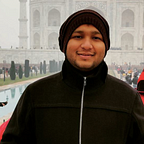The Theory of Backward Class in India
I want to address few important questions with this blog:
Question 1: A backward class cannot be identified only and exclusively with reference to economic criterion?
Question 2: A backward class can be identified on the basis of occupational-cum-income without any reference to caste?
In December 1980, the Second Backward Classes Committee, headed by B.P. Mandal, better known as the Mandal Commission, gave its report. It recommended 27% reservation for Other Backward Classes (OBCs) and 22.5% for the Scheduled Castes/Scheduled Tribes.
A decade later, in August 1990, the government issued an office memorandum (OM), providing 27% vacancies for Socially and Educationally Backward Classes to be filled by direct recruitment. Violent protests greeted this memorandum, and a challenge was mounted in the Supreme Court.
In 1991, a new government under the Congress issued a second OM notifying an additional reservation of 10% for other economically backward sections.
A nine-judge Bench of the Supreme Court pronounced a 6:3 majority verdict in the Mandal Commission case, upholding the 27% quota in the first OM, but struck down the 10% quota based on economic criteria.
The majority judgment held that “a backward class cannot be determined only and exclusively with reference to economic criterion”. “It may be a consideration or basis along with, and in addition to, social backwardness, but it can never be the sole criterion,” Justice B.P. Jeevan Reddy wrote for the majority.
The answer to the first question is settled till here!
Now moving to the second question!
Indra Sawhney case
The Constitution (103rd Amendment) Act, 2019, provides for 10% reservation in government jobs and educational institutions for the “economically backward” in the unreserved category. The Act amends Articles 15 and 16 of the Constitution by adding clauses empowering the government to provide reservation on the basis of economic backwardness.
The 10% economic reservation is over and above the 50% cap. They say the amendment violates the bar on quotas solely based on economic criteria and breaches the 50% quota limit which, they argue, is part of the Basic Structure of the Constitution. Goverment in response quoted the 2010 report of the Commission for Economically Backward Classes, chaired by Major General S.R. Sinho (retired), which said 18.2% of the general category came under the below poverty line. It has said the economically weaker sections required as much attention as the backward classes. The government said the 50% ceiling applies to the SCs/STs and the OBCs. The new provisions separately deal with the economically weaker sections.
The answer to the second question is settled till here!
References:
Vivek Gupta: https://www.linkedin.com/in/vivekg-/
Check out my legal space here: https://easylaw.quora.com
